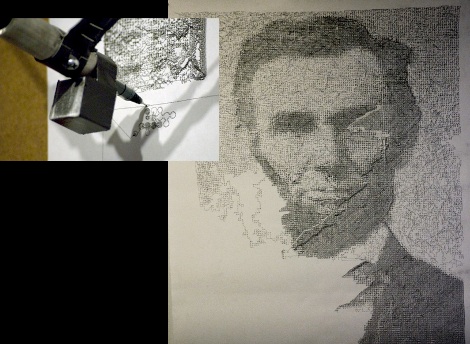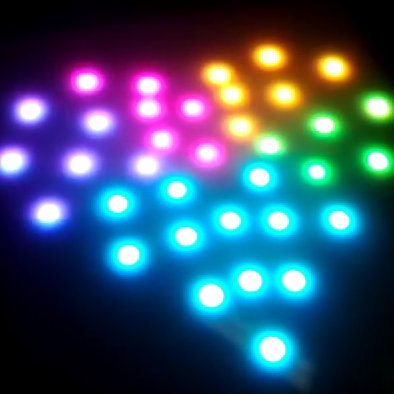
This robot artist, the Drawbot, produces images using an Arduino and Processing. A piece of paper is attached to a wall as a stylus connected to a couple of stepper motors scribbles out patterns that gradually become the image seen above. Each drawing is different and can take several weeks of constant operation to finish. That must have made debugging a real problem for [Harvey] during development. We wonder if this would work with homemade pencils?













